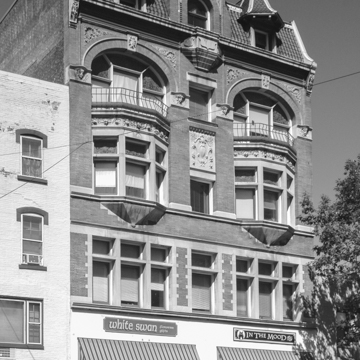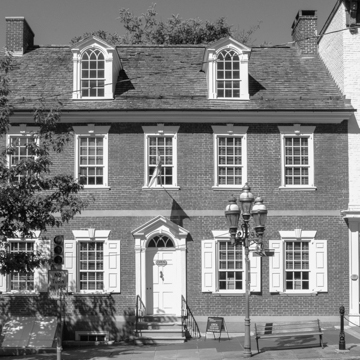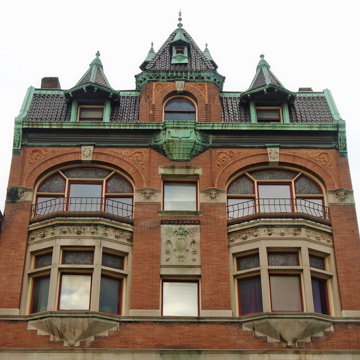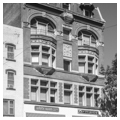Main Street provides a charming mixture of styles, including the late Georgian vernacular of the Johann Sebastian Goundie House (1810) at numbers 501–503, built for a Moravian brewer and comprehensively restored in 1968. But by far the most flamboyant example of Victorian architecture is the Myers Building, a work by the irrepressible Hale, who is best known for his wildly inventive speculative rows in north Philadelphia. Hale was a failed opera singer and he gave an appropriately musical finale to the George Myers building, which expires at the roofline in a crescendo of turrets and dormers. The building has been erroneously attributed to both D. C. Boutelle and George Hirst, who may have been involved as builders. Myers was a major figure in the life of Bethlehem, serving variously as town burgess, director of the Bethlehem Iron Works (later Bethlehem Steel), and president of the First National Bank. He clearly had a weakness for architectural excess; his house at 231 E. Market Street, built in 1874, is an extravaganza in brick with a sprawling composition and yet another overwrought roofline. Here the architect was indeed Hirst, who was responsible for the design and construction of dozens of residential and commercial structures. Like most of the E. Market Street mansions, the house is now apartments.
You are here
George Myers Building
If SAH Archipedia has been useful to you, please consider supporting it.
SAH Archipedia tells the story of the United States through its buildings, landscapes, and cities. This freely available resource empowers the public with authoritative knowledge that deepens their understanding and appreciation of the built environment. But the Society of Architectural Historians, which created SAH Archipedia with University of Virginia Press, needs your support to maintain the high-caliber research, writing, photography, cartography, editing, design, and programming that make SAH Archipedia a trusted online resource available to all who value the history of place, heritage tourism, and learning.














